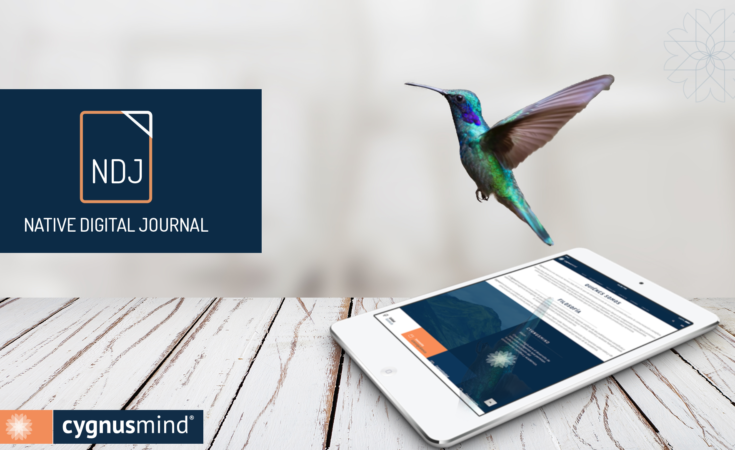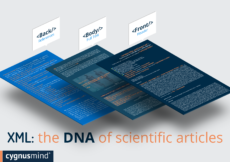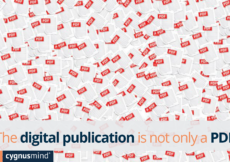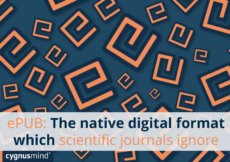www.cygnusmind.com
The Native Digital Journal – CygnusMind´s Blog
by Cygnusmind.com
ARTICLE
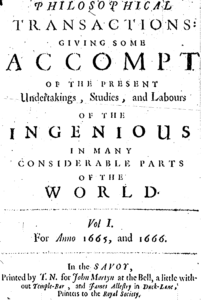 In 1665 was born the first scientific journal which took in count the Peer Review evaluation; we talk about Philosophical Transactions of the Royal Society. At the present time, it counts with more than 350 years of publishing uninterrupted. With a great vision could not be different from who is defined as itself as “The independent scientific academy of United Kingdom and the Commonwealth.”
In 1665 was born the first scientific journal which took in count the Peer Review evaluation; we talk about Philosophical Transactions of the Royal Society. At the present time, it counts with more than 350 years of publishing uninterrupted. With a great vision could not be different from who is defined as itself as “The independent scientific academy of United Kingdom and the Commonwealth.”
Today we can confirm that this is a really digital journal in the context of electronic journals. The closer touch you get, the better experience you have sharing your articles into a complex communication method. However, we can hardly say what a “digital” journal is in all existence of its meaning. Furthermore, we can think about a concept of communication system where The Native Digital Journal allows you to sum up the whole publishing process; unfortunately, this is a concept whose meaning has emerged late.
While we are talking about structure and manners for exposing the content of scientific journals – not about literary culture or lifestyle-, let’s going to speak clearly in terms of science. Our hypothesis: Native Digital Journals are limited, and they don’t know how, paradoxically, to profit the advance of digital technology for a better way of communicating its messages properly. As a conclusion, we are unable of find Native Digital Journals. What we can find are electronic journals, most of them, as a poor copy of its printed versions. In other words, the way to configure parameters remains limited by the paradigms of paper and printing; they are still being published only in PDF version and lack the advantages of digital technology.
Discuss this further.
A journal is native digital when has a solid concept, a design, and a conception purely from the beginning in the digital realm. At any time, along all the processes of discourse, opinion, elaboration, publication, distribution, dissemination, collecting works, conformation of authors and readers’ community, it never interferes the role and logic of the printed matter. On top of that, this is the way for enhancing positioning and consolidating a well-recognized prestige.
The Native Digital Journal is developed, manifests itself and is still modified in the digital sphere, although it has emerged many decades ago. “The World Wide Web is not just its medium of diffusion, but its backbone that holds the micro-system of scientific communication which represents every publishing” (cygnusmind.com).
What’s more, hypertext is the organization of information – text, data, sounds, images, etc. – through articulations and ligatures, colloquially called “links”. Therefore, this step allows to branch the information as it’s explained below:
- To do a deep reading, follow-up, and a consulting not necessary in a sequential way. You can star reading from whenever you want; you can address scientific texts from the method, discussion, conclusions or even sources of information.
- The participation of the individual – reader, viewer, reviewer – determines the plan – direction – the time, and the manner of the use of links; the individual defines when and how in every moment: he leads an active role exploring the information.
- The text – in Pair-Review – represents the substantial element in the scientific matter. Moreover, talking about digital realm, the DNA of the speech, scientifically, it is given by the structure and display of information from the digital code: the text in an inherent way.
- The digital code gives an advantage to necessary requirements for science:
a. Replicability
b. Construction of a new science from the existing
c. Visibility
d. Interoperability
In this direction, we could consider that mathematical formula, chemical reactions, equations, and more procedural elements cease to be only mathematical or reading signs. They became in execution actions processing data and repeatable and reusable methodologies. The symbol call for action in the digital formula.
The tables contain data and actions that can be processed, sorted, graphed. They are active information units which can be interrogated and interpellated. What is the main raison for? Science knows that conclusions depend on how reality has been questioned – the method – and soundness of them depend on characteristics of data about reality too; of course, better having them in hand
Apart from that, In the digital realm, talking about visualization context, the image ceases to be a marginal or ornamental reference for becoming a source of information itself, allowing us to enrich and add unthinkable elements to discourse. A tomography for the detection of cancer, a microscope element, a set of stars, etc. The image can be represented as a coded information with shape and color in each pixel.
For the first time movement, interaction and sound can be integrated into a scientific text, not only to improve the reading experience, but to generate more knowledge from enriched elements.
Between all the existent information – more than a million articles are written a year – it’s unmanageable and inoperable to research and/or locate something on the Web. This unmeasured information can be only processed by machines for routing to the readers. To do so in, the information must be processed, sorted, filtered, grouped, treated; this will depend on the way in which it is structured.
To this effect, tagging information in XML under JATS standard is the DNA of the text; is the beginning of the semantic web and the knowledge of wisdom; without doing this, it does not exist The Native Digital Journal.
The Extensible Markup Language – better known as XML – is the language of machines and JATS (Journal Article Tag Suite). This language defines the sets of labels – metadata – into which the information of a scientific article is structured. In this way, we can clearly locate the titles>The Native Digital Journal /title; the year>2018/year; the format>HTML/format>; the author(s)>cygnusmind/author>; The URL>https://www.cygnusmind.com/blog/</url>; summary <summary> ………</summary>; palabras clave, etc.
The XML-JATS add value in each phase into the process.
On the other hand, the elaboration of discourse consists in provide semantic and structure beyond from launching and written form. Its scope of action contributes by modifying the way in which the expression of a finding is thought, that is, without limit of pages, attachments, images in very high resolution, visualization formats, etc., which can allow an article marked in XML. Let’s explain this below:
- Formation: Interpretation of a text from the XML file to generate different reading formats as PDF, ePUB, HTML, and others.
- Publication: Online production of digital formats of scientific articles for an enriched reading and appropriate use of information.
- Distribution and Dissemination: Provides accurately and adequately information to search engines, which facilitates articulation and visibility. Also allows information to be present in thousands of libraries, content aggregators and specialized portals around the world.
- Collection of works and community of authors and readers. As expressed by one of the five basic principles of library science: “To each user their information and to each user’s information”. A text with structure and semantics reaches interested readers and authors increasing the reach beyond geographic or language limits to form a solid community that will support the journal.
- Communication and interaction. Globalization allowed us to know the social diversity of processes and to recognize that information is produced in multiple languages. Paradoxically, the use and evaluation of HTML has been lost when it allows us the automatic translation (treacherous traditore) of various languages, with imperfections but in permanent advance.
- Preservation. The Native Digital Journal having XML-JATS is preserving the content to future formats not known and guarantees its adaptation to the future technology, taking independence of media, formats and, of course, of trademarks. This is what the DNA of Native Digital Journal allows to do.
- Positioning: building prestige and recognition of a scientific journal. By increasing scope and visibility there is a greater likelihood of obtaining the expected impact. Similarly, by increasing the collection of academic works, selectivity and rigorous quality criteria contribute to the prestige and recognition of the community.
Thus far, this is a profound evolution in the transmission of knowledge. When the content of the paper media is released, various aspects of the scientific publishing and editing process can be rethought much more freely: they do not exist in the paging digital journal nor is it necessary to quote the page. There is no limit on the length of an article or typographical requirement, etc., and the different characteristics of the printed must be reconfigured for the digital environment: typography, spaces, alignment and all the typographic aspects must be thought for the ease of reading in electronic devices.
The “continuous” Native Digital Journal: there is no reason, no one, to avoid the uploading of any article online when it’s finished – when the Peer Review and the style editing is finished – it is not done by an atavism of its version printed and of the classification systems with practices that do not fit the digital realm and The Native Digital Journal. The classification system, volume, number, year, page, and a certain number of works are an atavism typical of the parameters of publication of the printed. So, when a number was to be prepared with a set of items, and the design was supposed to be send to designer, all the process resulted in archaic protocol. Today that process is not necessary. The design is done over programming and output in HTML, ePUB, PDF, etc., is immediate and with the personality of the editor under the concept: it moves and adjust to the document. In this regard, presenting numbers in advance could be considered an inappropriate editorial practice because of the very confusion involved: referring to something of the future in the present that already exists. All this can be resolved by becoming a “continuous” Native Digital Journal, because in the digital realm, the online setting is due to an editorial decision not subordinated by a technical process passed (layout).
Today the world of scientific communication faces a complex situation about roles and processes. The editor has been and is the guarantor of the quality and integrity of journals’ content, supported by the anonymous face of the reviewers. But the communication of information and the Native Digital Journal demand high technology, knowledge and continuous renewal. The editor needs allies to help the journal take the step; it’s not just a technological and programming issue, it’s a conceptual issue transferred to the technological realm. It can be resolved by those who have the experience in the publishing world but know how to take advantage of the enormous advantages of the technological world.
How to cite this article: Cygnusmind (2019). The Native Digital Journal. Retrieved from Cygnusmind’s blog: https://www.cygnusmind.com/blog/xml/the-digital-native-journal/

